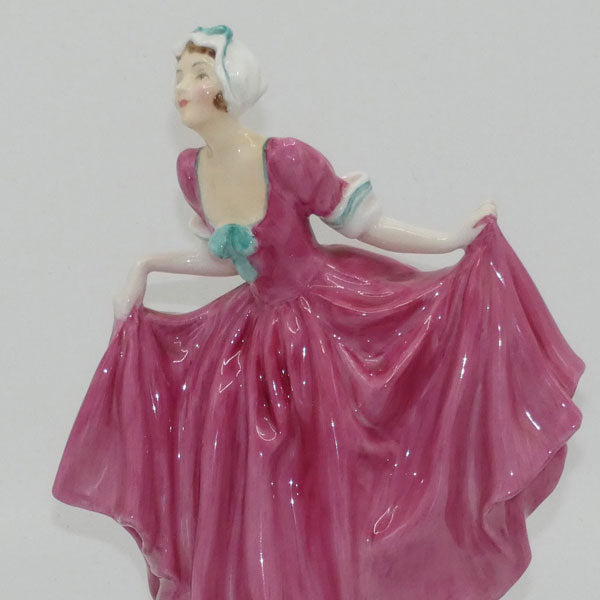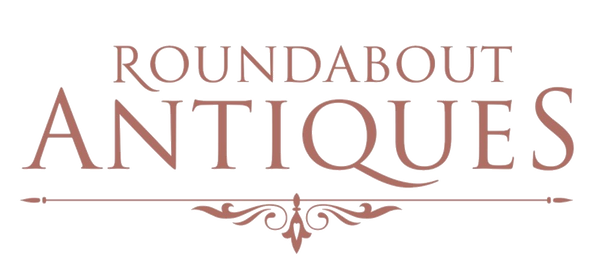Royal Doulton figures and figurines | the masterful Leslie Harradine

Born Arthur Leslie Harradine (1887-1965), Harradine sits in position one as Royal Doulton’s premier modellers producing superb figures from 1920 until the mid 1950s.
Harradine started as an apprentice at Doultons Lambeth factory in London in 1902 where he worked under the renowned artisan potter George Tinworth and studied part-time at the Camberwell School of Arts. Leslie Harradine went on to qualify and work in the Royal Doulton design department.
His main interest lay in clay sculpture and the design of free standing figures and he produced several prototypes which drew the attention of Charles Noke the Royal Doulton art director. During his tenure he designed various Doulton character jugs, figures, animals and vases – but in figurines is where his real talents are showcased, as the most prolific modeller of his time.
In 1912 Leslie Harradine left the Royal Doulton studios in England to emigrate to Canada with his brother where they purchased land and tried to build a 4000 acre farm. However the location was isolated, the soil was poor and the work was hard but Leslie enjoyed the life and managed to make a simple living from it. During the little spare time he had, he painted and made models from clay deposits.
In 1916 the Harradine brothers left Canada and joined the British army to fight the great war in France, however Leslie was injured when his horse was shot from under him and he then spent a long spell in hospital back in England. While n hospital he met his future wife. They married and a little while later Leslie became a father.
He returned to Canada but this did not seem to him to be a suitable place for his wife and child so following the war Leslie passed his half of the farm to his brother and settled in Bedfordshire doing bits and pieces of painting and modelling.
His dream, once again, was to open a small ceramics studio in London. In 1920 Leslie Harradine had not been back in England long when Doultons Charles Noke, the Art Director got to hear about him and set up a meeting. Noke offered Leslie a job as a figure designer at the Burslem works but he refused.
Leslie had grown to like his independence and wanted to work only for himself. He did, however, eventually agree to send Noke some samples of his models on a freelance basis.
In 1920, the first Leslie Harradine Royal Doulton figure, HN395 Contentment was released.
Leslie Harradine provided a regular supply of figures to Royal Doulton for almost forty years but always on a truly freelance basis, Leslie would be the one to decide what he would model and when, and he would send these three at a time, on a monthly basis to the Royal Doulton Burslem works.
It is said that the other Royal Doulton artists, designers and painters would all gather round eagerly when his monthly shipment was unpacked to see what he had come up with this time.
Many hugely popular models flowed from his small home studio including Polly Peachum and other figures from his rendition of The Beggars Opera.
Others included:
The Balloon Lady, The Old Balloon Seller, The Balloon Man and The Flower Sellers Children - just some of the iconic Street Vendors series.
The slightly risque models including The Bather, Susanna, Angela, Siesta and The Sunshine Girl – either in swimsuits, lingerie clad or nude.
Some of Harradine's best work is shown in the playful art deco era figures such as Lady Jester and Marietta.
Other Leslie Harradine classics such as Delight (pictured), Reflections, Fiona, The Mirror, Jasmine, Sweet and Fair, The Bride and Nell Gwynn. Many of these pieces appear in different colourways.
Leslie Harradine loved children and produced a series of Child Studies which were almost old fashioned in their conception and portrayal but they proved to be very popular with the buying public and stayed in production for many years.
Yet another series of child studies, called the ‘Nursery Rhyme Series‘, bore a strong similarity to the work of Freda Doughty at Royal Worcester. These were equally popular and also stayed in production for many years.
Leslie Harradine eventually moved to Sark, a small member of the Channel Islands where no cars are allowed and continued his modelling career from there. His new creations would be shipped to the mainland and then on to the Royal Doulton at the heart of the Potteries as before. Harradine continued with his prolific modelling continuing until the late 1950’s when he eventually informed Royal Doulton of his intention to retire.
The last Leslie Harradine figure to be released was HN2175 The Beggar which was a second version of the Beggars Opera series. This was released in 1956. Another model, The Apple Maid was released in 1957 but this bore an earlier number of HN2160 and had presumably been modelled slightly earlier and just taken longer to produce.
In 1961 Leslie Harradine moved to Spain where he lived while modelling local peasants in terracotta pottery until his death in 1965.
His legacy in superbly modelled, Royal Doulton figurines lives on in many collections throughout the world and his designs continue to capture collectors attention, hearts and minds.
To see our extensive stocks of Royal Doulton figures and figurines (many by Leslie Harradine) please visit our dedicated store collection
To see our extensive stocks of Royal Doulton character figures and figurines (many by Leslie Harradine) please visit our dedicated store collection
